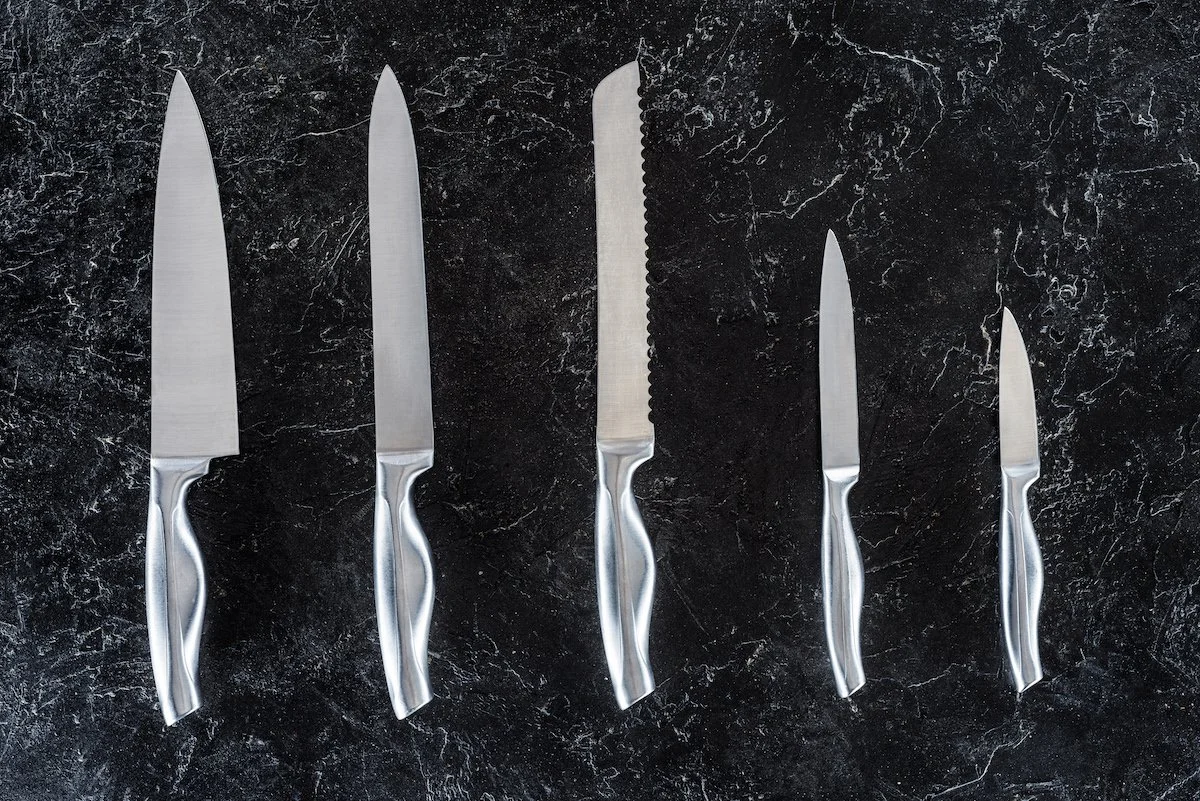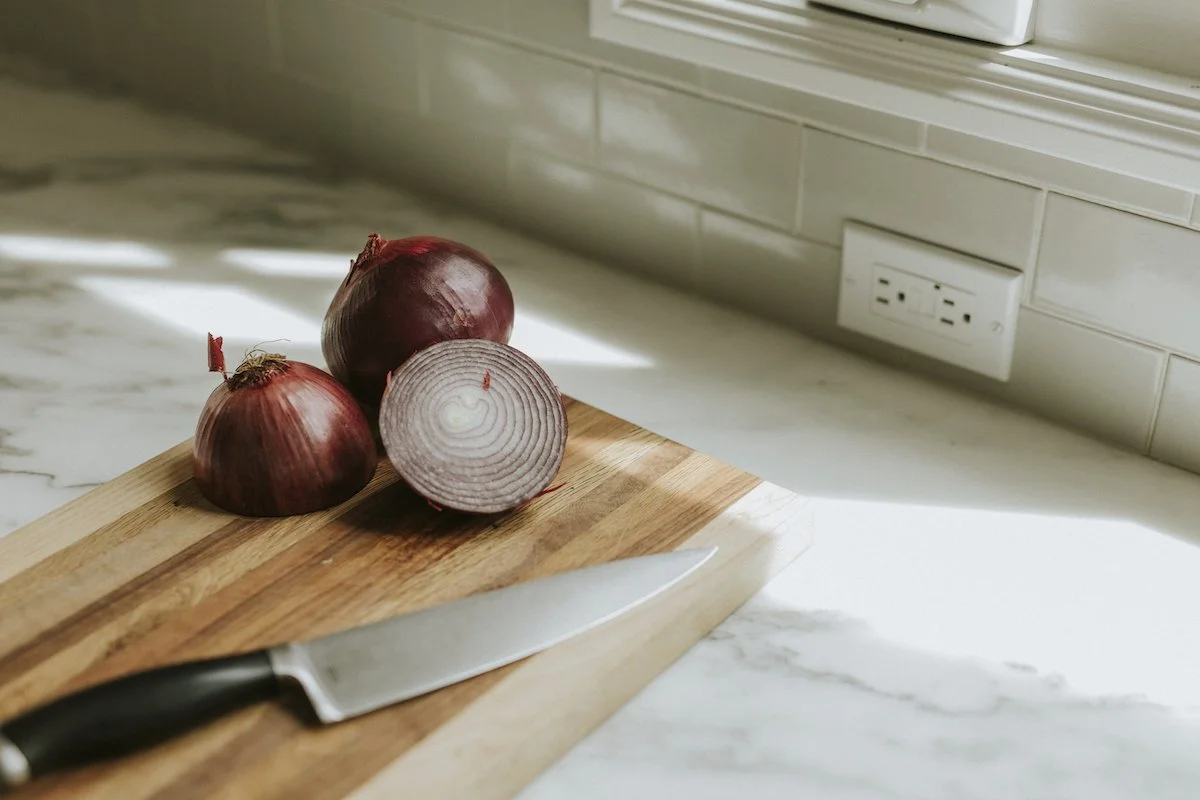Culinary Knife Safety
Languages: English
Media Editing: This subject does not contain any editable media.
Description: Knife-related accidents consistently rank as one of the top three types of accidents or dangers in professional kitchen environments, and thousands of knife-related injuries are treated in Hospital Emergency Rooms every year. While it's unrealistic to eliminate these types of incidents completely, the content in this subject can help make sure that you and your staff have the knowledge required to make good, safe choices when it comes to culinary knife selection, inspections, uses, and handling.
Languages: English
Media Editing: This subject does not contain any editable media.
Description: Knife-related accidents consistently rank as one of the top three types of accidents or dangers in professional kitchen environments, and thousands of knife-related injuries are treated in Hospital Emergency Rooms every year. While it's unrealistic to eliminate these types of incidents completely, the content in this subject can help make sure that you and your staff have the knowledge required to make good, safe choices when it comes to culinary knife selection, inspections, uses, and handling.
Languages: English
Media Editing: This subject does not contain any editable media.
Description: Knife-related accidents consistently rank as one of the top three types of accidents or dangers in professional kitchen environments, and thousands of knife-related injuries are treated in Hospital Emergency Rooms every year. While it's unrealistic to eliminate these types of incidents completely, the content in this subject can help make sure that you and your staff have the knowledge required to make good, safe choices when it comes to culinary knife selection, inspections, uses, and handling.
Topics
Choosing the Right Knife for the Job
-
In this introductory topic, learners are given a high-level overview of the different characteristics and uses of the four most popular kitchen knives: chef/French knife, serrated/bread knife, boning knife, and the paring knife. Learners are also given some best practices regarding knife selection and use.
-
Questions (level 1, 2, 3)
-
This topic is currently available in English.
-
Selecting the right knife for the job can protect the food’s texture and make sure it’s cut to the right sizes which can impact cooking and flavor.
Only use knives for their intended purpose; do not use knives to break down boxes, split frozen food, open containers, break lid seals, etc. Alternate uses can damage the knives or cause the user injury.
A chef knife, also known as a French knife, is a multipurpose knife, with a 6 to 12-inch rounded blade, which lets you rock the knife while cutting. It’s used for most vegetable and meat preparation.
A serrated/bread knife is used for foods that are harder on the outside and softer on the inside, like bread and softer ‘fleshed’ foods, like tomatoes. The serrated blade allows you to cut through the hard outer layer without squishing or damaging the food.
A boning knife has a sharp point, and medium, narrow blade. It’s used to trim fat from meats and carve meat from around the bones. It’s usually used for chicken and fish.
A paring knife is a precision knife with a blade that is approximately 3-inches long. It’s used for cutting smaller vegetables and fruits, de-veining shrimp, peeling, etc.
The general rule to follow when selecting the right knife for the job is to make sure your knife is larger than the food you’re cutting.
Preview of topic image for “Choosing the Right Knife for the Job” as this topic is questions only.
Knife Inspection and Cutting Safety
-
A pre-operational inspection is required of most tools in most industries, and your knives are no exception. In this topic, learners are taught what to look for when inspecting their knives and some of the implications of using dull or loose blades and handles. This topic also teaches some best practices when it comes to cutting safety and how to help prevent cutting-related musculoskeletal disorders (MSDs).
-
Questions (level 1, 2, 3)
-
This topic is currently available in English.
-
Always do a careful inspection of each knife before using it to make sure it’s safe for use.
Inspect both sides of the handle to make sure it’s not loose or damaged so that you know it will hold the blade securely while in use.
Inspect both sides of the blade to make sure it’s straight and doesn’t have any nicks or chips. Damaged or loose blades can compromise the knife’s expected performance, which can cause injuries or damage the food.
Make sure the knife blade is sharp. Dull blades are responsible for most knife-related accidents because dull blades require the user to increase pressure, which affects how well they can control the blade.
If your knife is too dull to use safely, clean it off, and place it in the designated bin for dull blades with the blade facing down.
Only use knives for their intended purpose; do not use knives to break down boxes, split frozen food, open containers, break lid seals, etc. Alternate uses can damage the knives or cause the user injury.
For most knives, proper technique includes placing a finger (index) on the blunt (top) side of the blade; this helps you achieve the optimum control position over the blade.
Always keep the fingertips on the hand holding the food tucked in and out of the way of the blade to avoid accidental cuts or injuries.
Do not use the blade of your knife to cut or separate frozen foods. The jabbing motions and hard, slippery surface can compromise your control of the blade or lead to accidentally stabbing your hands.
To help prevent musculoskeletal disorders (MSDs), take periodic breaks from long cutting jobs, and perform stretching exercises at your work station.
Preview of topic image for “Knife Inspection and Cutting Safety” as this topic is questions only.
Cutting Surfaces - Cutting Boards
-
This short topic teaches learners some valuable safety information related to cutting surfaces, such as: how to select the right type of cutting board, how to secure the cutting board, securing movable surfaces, and more.
-
Questions (level 1, 2, 3)
-
This topic is currently available in English.
-
Always use a cutting board rather than cutting directly on your counter. Counter tops can damage or dull the blades and promote cross-contamination.
To help secure the cutting board, place a wet cloth underneath your cutting board. The wet cloth keeps the board from moving while you’re cutting.
If your table or platform is on wheels, make sure the wheels are locked, so the table doesn’t roll or move while you’re using the knife.
Make sure your cutting table or platform is at a comfortable height. If needed, stack cutting boards on top of each other to build up height, which will help you avoid musculoskeletal disorders (MSDs), as well as maintain better control of the blade.
To avoid contamination, always use a plastic cutting board for meat because plastic isn’t as porous as wood, and it can be properly cleaned and sterilized after use.
Never mix up cutting boards; this can lead to cross-contamination which can be dangerous and cause illness.
Preview of topic image for “Cutting Surfaces - Cutting Boards” as this topic is questions only.
Safe Knife Handling
-
There is more to knife safety than knowing how to safely cut your food. How should you pass a knife to a co-worker? What should you do if you need to leave your knife unattended? What should you do if you drop a knife? And what if you’re interrupted while in the middle of a cutting job? These are all good safety questions, and the answers are found within the content of this topic.
-
Questions (level 1, 2, 3)
-
This topic is currently available in English.
-
If you need to leave your knife during a task, wipe it, and place it on top of your cutting board, uncovered and in plain sight, so everyone can see it’s there.
Never leave the handle or blade of the knife hanging over the edge of the table or surface. Others can knock the knife off or cut themselves when walking past the knife.
If a knife is knocked off a surface, do NOT try to catch or stop it. Stand back, and let the knife fall to the ground. Interfering with the fall can cause an injury if the blade catches your hand or lands on your feet.
When carrying a knife, always carry it at your side, with the blade facing back and with your finger on the blunt edge of the blade.
To pass a knife to another person, grip it securely, pass them the handle, with the sharp edge of the blade pointing towards the floor. This way, they can safely grab the knife without the risk of cutting themselves.
If you are interrupted while cutting food, put the knife down on the cutting surface, and give the other person your full attention, so you’re not distracted by the conversation while trying to use your knife.
When not in use, knives should always be stored in a block or in a rack to reduce the risk of damage to the blade and accidents.
Preview of topic image for “Safe Knife Handling” as this topic is questions only.





